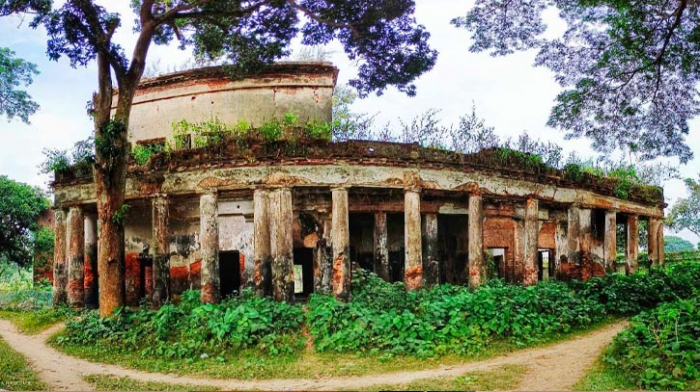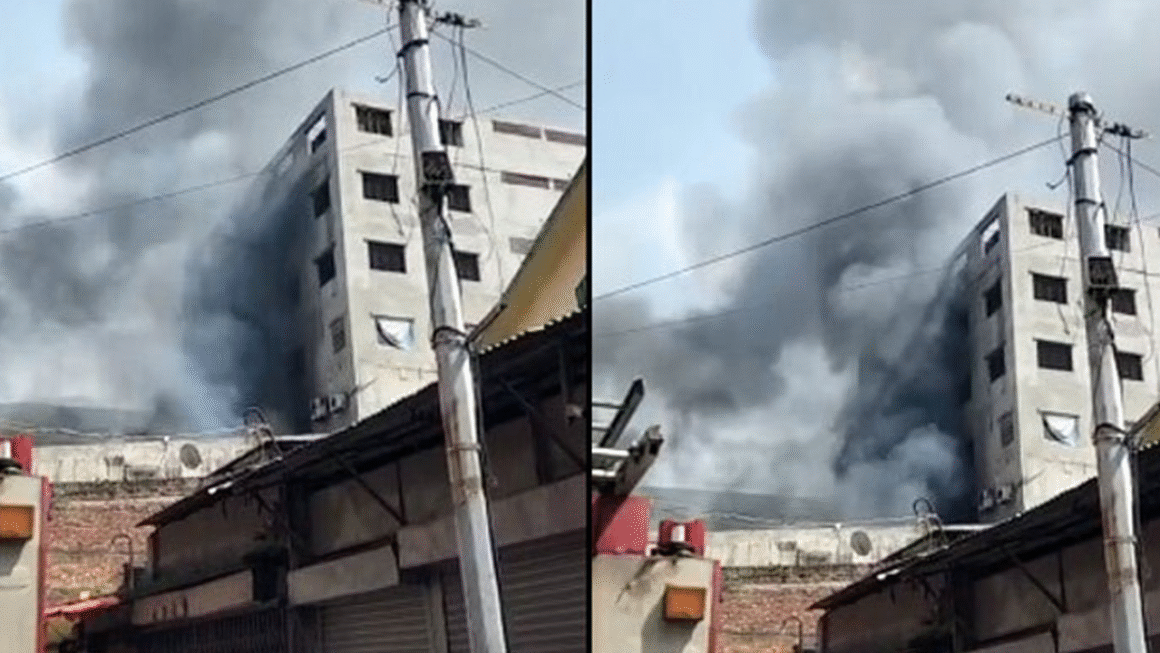Introduction: Unveiling the History of Muhiskundi Nilkuthi-
Located in the remote village of Muhiskundi in Kushtia district, the Muhiskundi Nilkuthi stands as a silent monument of a painful chapter in Bengal’s colonial history. This former indigo factory, built by British planters in the 18th century, is now a decaying reminder of the exploitation faced by local farmers during the height of the indigo revolt.
Muhiskundi Nilkuthi isn’t just a historical structure—it is a symbol of resistance, a place that helps narrate the silent agony and the untold courage of Bengali peasants. Today, it serves as an archaeological and educational site, drawing attention from history enthusiasts, students, and travelers alike.
The Geographic Location of Muhiskundi Nilkuthi-
Muhiskundi Nilkuthi is situated in the Daulatpur Upazila of Kushtia District, in the Khulna Division of Bangladesh. It lies around 30 kilometers northwest of Kushtia town and is accessible by road via the Kushtia-Pakshi highway.
This site is nestled in a peaceful, rural setting surrounded by fields and vegetation. The serene environment contrasts with the violent history the walls of the Nilkuthi have silently witnessed.
Historical Background of Muhiskundi Nilkuthi-
The British East India Company, during its economic expansion in Bengal, sought to dominate the lucrative indigo trade. Muhiskundi was selected as a strategic location to establish an indigo kuthi (factory) due to its fertile land and easy access to the Padma River for transportation.
Built in the early 1800s, Muhiskundi Nilkuthi was one of several such plantations in Kushtia. The factory was used to process indigo, a deep blue dye obtained from the Indigofera plant. However, the beauty of the dye concealed a brutal reality—the inhumane treatment of Bengali farmers, forced to grow indigo under exploitative contracts.
The farmers were not paid fairly and were coerced into indigo cultivation through violence and economic pressure. This eventually led to widespread discontent, culminating in the Indigo Rebellion (Nil Bidroho) of 1859–60, where peasants rose against the oppressive plantation system.
Architectural Design and Features-
Though now partially in ruins, Muhiskundi Nilkuthi still showcases distinctive British colonial architectural features. The complex includes:
- Main Factory Building – Made of thick brick walls and lime plaster, designed for indigo fermentation and dye extraction.
- Storage Chambers – Used for keeping raw indigo and processed dye.
- Residential Quarters – Living space for British planters.
- Observation Tower – Used to oversee laborers and protect against rebel attacks.
- Indigo Vats – Large brick tanks used to ferment and extract the dye from indigo plants.
The architecture, though utilitarian, also reflected the British planters’ need for dominance and security, incorporating high walls and isolated rooms.
The Significance of Indigo in Bengal’s Colonial Economy-
During the 18th and 19th centuries, Bengal was the epicenter of global indigo production. Indigo was a precious commodity in Europe before the advent of synthetic dyes. The demand for indigo led to the proliferation of kuthi establishments like the one in Muhiskundi.
However, the economic benefits of this trade did not reach the local populace. It was a system of colonial extraction, and the Muhiskundi Nilkuthi stands as one of its most visible scars.
The Indigo Rebellion and Its Impact-
Muhiskundi Nilkuthi is directly associated with the Indigo Rebellion, a significant event in the history of peasant resistance in Bengal. Farmers near Muhiskundi were among the many who defied the British planters, refusing to grow indigo and protesting unjust treatment.
The uprising forced the colonial government to reevaluate its policies. Eventually, the cultivation of indigo in Bengal declined, especially with the rise of synthetic alternatives. Nilkuthis like Muhiskundi were gradually abandoned.
Present Condition of Muhiskundi Nilkuthi-
Today, the Muhiskundi Nilkuthi is in a semi-dilapidated state, with parts of the roof and walls crumbling due to neglect. However, efforts by local historians and cultural activists have helped raise awareness about its importance.
The site is not yet officially maintained by the Department of Archaeology, but advocacy continues for its restoration and recognition as a national heritage site.
Visitors to the area can explore the remaining structures, walk through the ancient ruins, and imagine the lives of both the oppressors and the oppressed who once moved through these same corridors.
Cultural and Educational Importance-
For researchers, students, and cultural scholars, Muhiskundi Nilkuthi offers:
- A tangible link to the colonial past
- Insights into the Indigo Rebellion
- Real-life context for understanding British economic policies in Bengal
- A platform for raising awareness about peasant rights and rural exploitation
Local schools sometimes organize field trips, and university students researching colonial agriculture frequently visit the site.
Tourism and Accessibility-
While not yet a fully developed tourist destination, Muhiskundi Nilkuthi is slowly gaining recognition among offbeat travelers and history buffs.
How to Reach:
- From Kushtia Town: Take a bus or CNG to Daulatpur, then a local rickshaw or van to Muhiskundi.
- Nearest Railway Station: Poradaha Railway Station (approx. 15 km away)
Nearby Attractions:
- Tagore Lodge (Kushtia)
- Lalon Shah’s Mazaar
- Shelaidaha Kuthi Bari
- Hardinge Bridge
Visitor Tips:
- Wear comfortable shoes, as walking on uneven, grassy terrain is required.
- Bring water and snacks, as there are no restaurants nearby.
- Visit during daylight hours and ideally with a local guide for historical context.
- Avoid monsoon season due to muddy roads.
Best Time to Visit Muhiskundi Nilkuthi-
The ideal time to visit Muhiskundi Nilkuthi is from November to March. During this period, the weather in Kushtia remains cool and dry, allowing for a more comfortable exploration of the outdoor ruins. The greenery around the site is also more vibrant, making photography especially rewarding.
Avoid the rainy season (June–September), as rural access roads can become slippery and hard to navigate.
Conclusion-
Muhiskundi Nilkuthi stands not only as a historical relic but also as a stark reminder of the injustices of colonial rule. As Bangladesh works to preserve and honor its heritage, this indigo factory deserves greater attention. From a place of pain and oppression, it can evolve into a space of education and reflection—a place where future generations learn about the price of economic freedom and the resilience of rural communities.
It is time for Muhiskundi Nilkuthi to be recognized not just as an abandoned ruin but as a cultural treasure, rich with stories that shaped the subcontinent.
Frequently Asked Questions (FAQs)-
What is Muhiskundi Nilkuthi?
Muhiskundi Nilkuthi is an abandoned British-era indigo factory located in Kushtia District, Bangladesh.
Why is Muhiskundi Nilkuthi historically important?
It is a symbol of the colonial indigo trade and linked with the Indigo Rebellion of 1859–60, representing the struggle of Bengali farmers.
When was Muhiskundi Nilkuthi built?
It was built in the early 1800s by British indigo planters.
Is Muhiskundi Nilkuthi open to visitors?
Yes, though not officially maintained, the site is open and accessible to the public.
How can I reach Muhiskundi Nilkuthi?
You can travel by road from Kushtia town via Daulatpur. It’s best to use local transport or private vehicles.
What are the main features of Muhiskundi Nilkuthi?
The site includes a main factory building, storage units, indigo vats, and residential quarters.
Is there any entry fee to visit Muhiskundi Nilkuthi?
Currently, there is no entry fee to visit the site.
What is the best time to visit Muhiskundi Nilkuthi?
November to March is the best time due to pleasant weather and dry conditions.
Is there any preservation initiative underway?
Though informal awareness campaigns exist, there is no major government conservation project yet.
Are there any nearby tourist sites I can visit along with Muhiskundi Nilkuthi?
Yes, you can also visit Shelaidaha Kuthi Bari, Lalon Shah’s shrine, and the Tagore Lodge.













